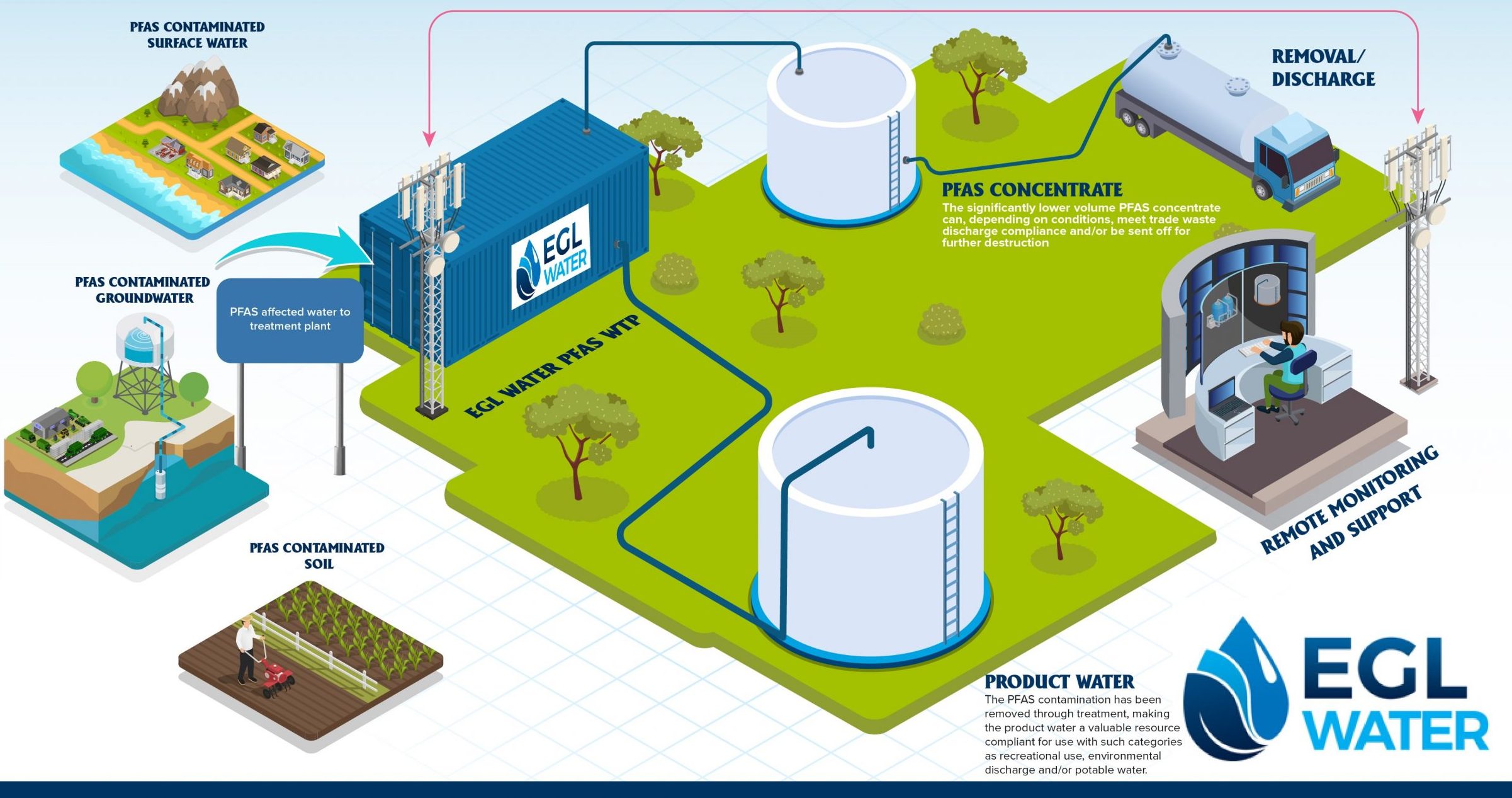Innovative PFAS Treatment Solutions for Safer Water
The enhancing prevalence of PFAS contamination in water materials requires an important exam of cutting-edge treatment solutions. Advanced filtration modern technologies and novel chemical treatments existing encouraging methods for decreasing these relentless pollutants. Additionally, arising bioremediation strategies supply an even more sustainable approach to dealing with PFAS difficulties. As regulatory frameworks remain to adapt, comprehending the efficiency and scalability of these solutions becomes critical. What ramifications do these improvements hold for public health and wellness and ecological remediation, and exactly how can stakeholders successfully execute them in diverse contexts?
Introduction of PFAS Contamination
PFAS contamination has actually become a significant environmental and public health worry. Per- and polyfluoroalkyl materials (PFAS) are a team of artificial chemicals understood for their determination in the setting and human body, leading them to be typically described as "for life chemicals." These compounds have actually been extensively made use of in various industries, consisting of firefighting foams, water-repellent textiles, and food packaging, largely due to their water- and grease-resistant homes.
The widespread use of PFAS has actually led to their detection in dirt, water products, and also in the blood of people and animals. Researches have actually connected PFAS direct exposure to numerous health issues, including developing results in infants, immune system disorder, and various types of cancer. In addition, the ecological determination of these substances complicates their destruction and removal, increasing worries regarding long-term ecological effects.
Regulative bodies are significantly applying rigorous standards to keep track of and reduce PFAS degrees in drinking water and various other environmental tools. As recognition of PFAS contamination grows, it has ended up being important for communities and sectors to seek effective therapy solutions to reduce direct exposure and secure public health.
Advanced Filtration Technologies
As the necessity to deal with PFAS contamination intensifies, progressed filtration technologies have become a pivotal component in the remediation initiatives aimed at eliminating these consistent chemicals from water sources. These modern technologies utilize advanced systems to successfully target and record PFAS substances, which are notoriously resistant to traditional treatment approaches.
Among one of the most encouraging approaches is making use of granular triggered carbon (GAC), which adsorbs PFAS molecules due to its high surface area and permeable structure. This technique has been widely applied in both local and industrial setups, demonstrating significant decreases in PFAS focus. Furthermore, ion exchange resins have acquired traction, especially designed to selectively bind PFAS ions from water, hence promoting their elimination.
Membrane layer purification innovations, such as reverse osmosis and nanofiltration, additionally show effectiveness in PFAS elimination by physically separating contaminants from water - pfas management. These systems can achieve high levels of purity, making them appropriate for drinking water applications
Chemical Treatment Innovations
Numerous chemical therapy technologies are being checked out to efficiently deal with PFAS contamination in water products. One appealing strategy includes using innovative oxidation procedures (AOPs), which make use of powerful oxidants such as ozone, hydrogen peroxide, or chlorine dioxide incorporated with UV light to damage down PFAS substances right into less unsafe compounds. This approach has shown effectiveness in research laboratory setups, revealing potential for scalability in real-world applications.
An additional ingenious method is the advancement of ion-exchange materials especially designed to target PFAS. These resins can precisely adsorb PFAS substances from water, enabling their removal throughout therapy processes. Current advancements have actually enhanced the performance and capability of these resins, making them a desirable alternative for water therapy facilities.
Furthermore, researchers are investigating the use of chemical agents like persulfate and ferrous ions to boost the destruction of PFAS in infected water. These representatives can cause chain reaction that assist in the breakdown of relentless PFAS substances.
Emerging Bioremediation Methods
Recent advancements in chemical therapy advancements have paved the way for discovering bioremediation strategies as a viable alternative for resolving PFAS contamination. Bioremediation takes advantage of the natural metabolic processes of microorganisms to break down or change toxins, making it an enticing approach for dealing with persistent impurities like PFAS.
Emerging methods in bioremediation consist of making use of genetically engineered microorganisms that can particularly target and break down PFAS compounds. These microbial stress are being established for their improved deterioration capabilities, boosting the efficiency of the remediation procedure. Additionally, scientists my site are examining the possibility of plant-assisted bioremediation, where specific plant species may uptake and withdraw PFAS from infected soil and water.
Another encouraging technique is the application of bioaugmentation, which entails presenting useful bacteria into infected atmospheres to increase the deterioration of PFAS. This technique can facilitate quicker remediation timelines and enhance general efficiency.

Regulative Frameworks and Specifications
A detailed governing structure is important for properly handling PFAS contamination and ensuring public health protection. The enhancing acknowledgment of per- and polyfluoroalkyl substances (PFAS) as environmental contaminants has actually motivated various federal and state firms to create requirements that helpful hints control their visibility in water products. The United State Environmental Security Agency (EPA) has developed wellness advisories and is working toward establishing enforceable limitations for PFAS in drinking water.
State-level laws differ substantially, with some states embracing more stringent standards than those proposed by the EPA. These laws commonly consist of optimum contaminant levels (MCLs) for details PFAS compounds, tracking demands, and reporting responsibilities for water energies. Furthermore, emerging structures focus on the removal of contaminated sites, highlighting the need for effective treatment modern technologies.

Final Thought
In conclusion, the growth and execution of innovative PFAS therapy services my explanation are crucial for attending to the prevalent concern of water contamination. Advanced filtering modern technologies, chemical treatments, and arising bioremediation techniques jointly present a multifaceted approach to effectively reduce and weaken PFAS degrees. As governing structures proceed to advance, incorporating these modern technologies will be necessary to secure public health and wellness and recover the integrity of infected water sources, inevitably adding to a cleaner and much safer setting.